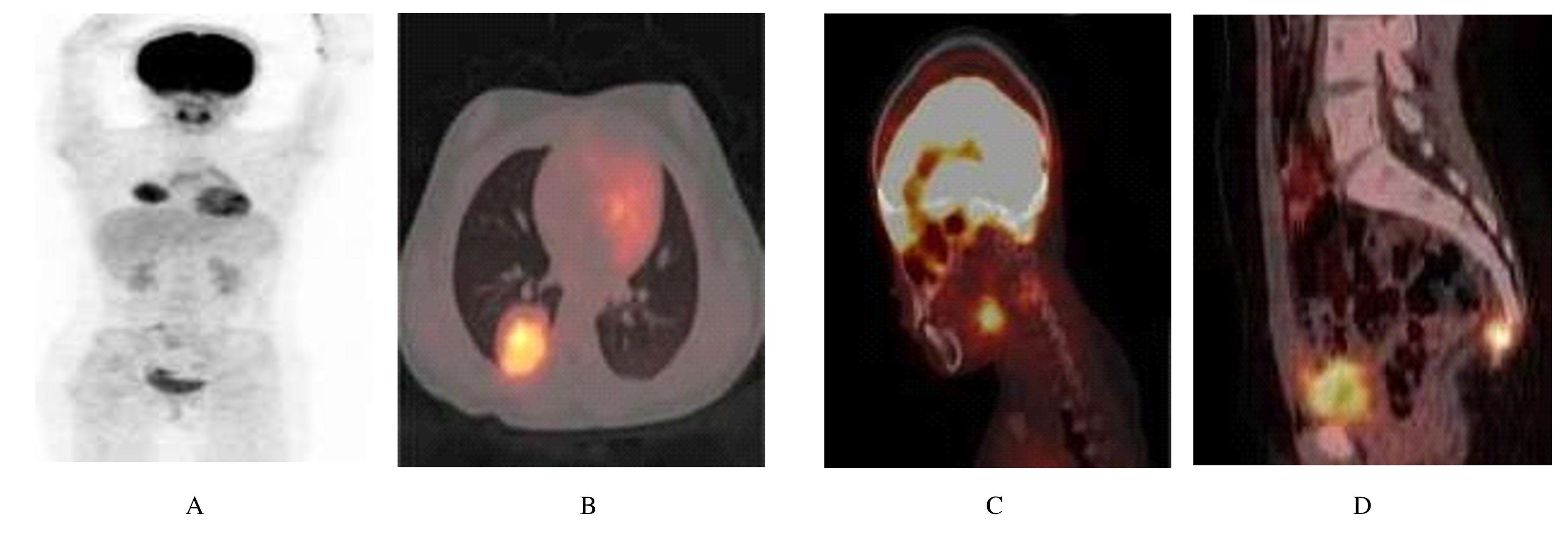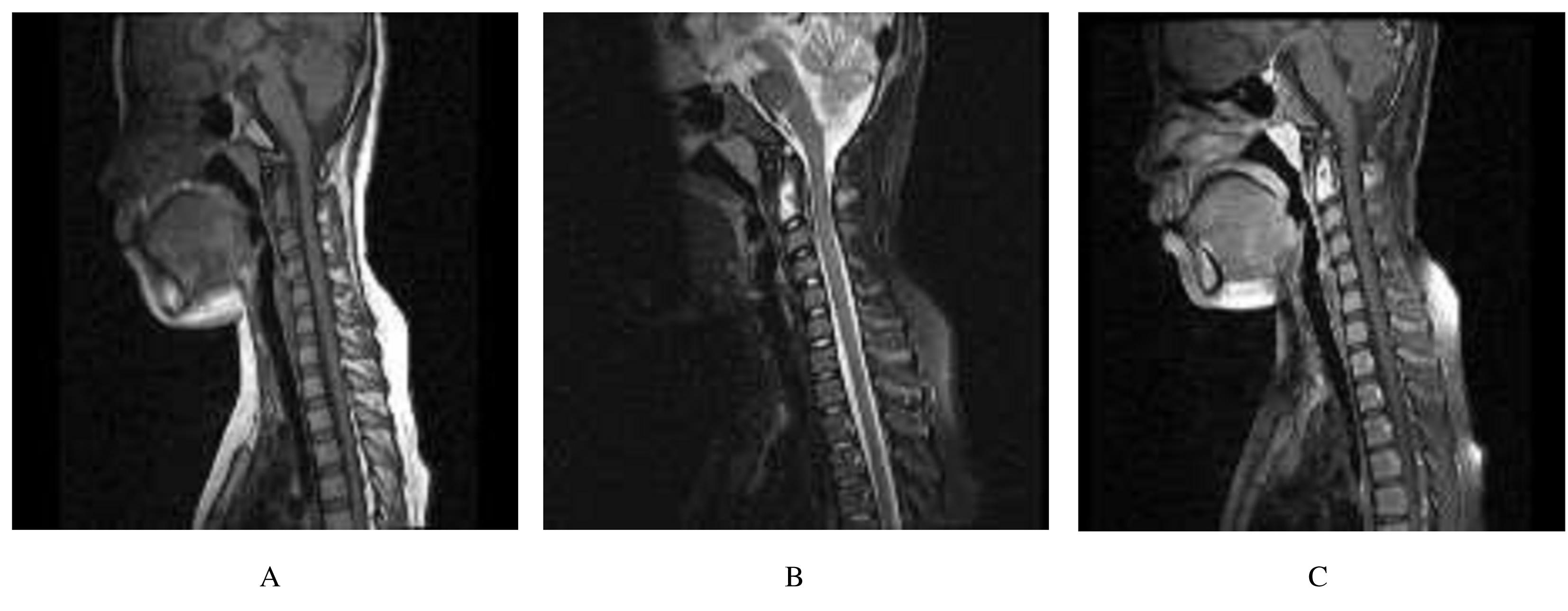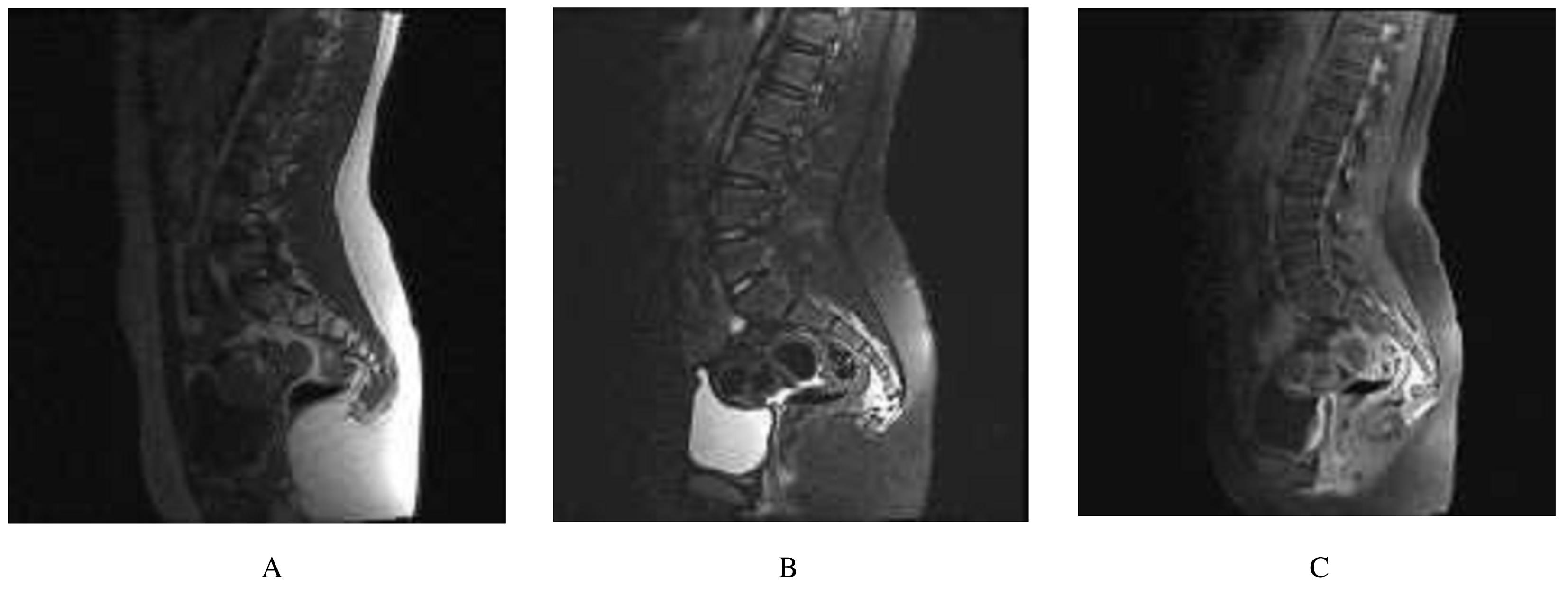吉林大学学报(医学版) ›› 2022, Vol. 48 ›› Issue (1): 216-221.doi: 10.13481/j.1671-587X.20220127
尾骨原发小细胞型骨肉瘤患者 18F-FDG PET/CT 显像特点分析1例报告及文献复习
- 吉林大学第一医院核医学科,吉林 长春 130021
Analysis on characteristics of 18F-FDG PET/CT imaging of patient with primary small cell osteosarcoma of coccyx:A case report and literature review
Ping HU,Nan JIANG,Yinghua LI,Hongguang ZHAO( )
)
- Department of Nuclear Medicine,First Hospital,Jilin University,Changchun 130021,China
摘要: 分析 1 例尾骨原发小细胞型骨肉瘤并发多处转移患儿的临床症状、实验室检查和氟代脱氧葡萄糖(18F-FDG)正电子发射断层显像/X线计算机断层显像(PET/CT)的特点,以提高影像科医生对尾骨原发病变的诊断水平。 收集 1 例尾骨原发小细胞型骨肉瘤并发多处转移患儿的临床资料,并通过相关文献复习,探讨其临床特点、影像学表现、诊断和治疗方法。 患儿,女性,10 岁,因颈部疼痛 2 周、发热 1 周行肺 CT 检查发现右肺下叶占位性病变入院。 查体,体温最高达37.5 ℃,无其他不适。实验室检查, 碱性磷酸酶 221.3 U·L-1,肌酐 38.1 μmol·L-1。18F-FDG PET/CT 检查显示右肺下叶高代谢团块,考虑为恶性肿物;颈2椎体左侧代谢增高,不除外转移瘤;尾骨密度不均,局部软组织密度结节突向盆腔伴代谢增高,考虑恶性。核磁共振成像(MRI)检查显示,枢椎形态不规整,不规则长T1长T2信号,增强病灶明显强化;骶 5 水平椎管内、骶 5 椎体与尾椎间及周围囊片状稍长 T1和稍长T2信号,增强未见明显强化, 骶椎前方软组织条片样强化,考虑占位性病变。右肺下叶占位术后病理,考虑为肺的转移性小细胞型骨肉瘤。综合上述表现及病理学分析决定对尾骨软组织病灶穿刺活检,病理提示为小细胞型骨肉瘤。本例患儿最终诊断为尾骨原发小细胞型骨肉瘤,肺转移,骨转移。 尾骨原发小细胞型骨肉瘤诊断难度大,18F-FDG PET/CT 分子影像的应用对明确病变受累部位、肿瘤代谢程度和定位活检组织部位起关键性作用。
中图分类号:
- R734.2






